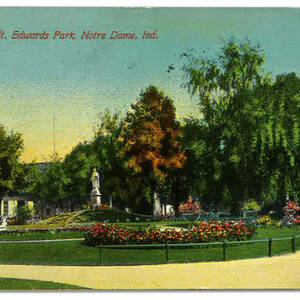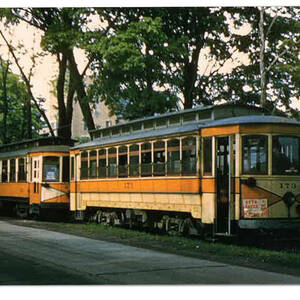They were the emails, texts and Instagram images of their day. Starting at the dawn of the 20th century, a postcard craze swept America.
Postcards were a popular way to send quick, informal, inexpensive messages to friends and family at a time when mail delivery in many cities occurred twice a day, and Notre Dame was part of the mania. As early as 1903, postcards showing campus buildings and scenes circulated far and wide. At first, only the recipient’s address — no written message — was permitted on the back. That’s why the greetings on these early postcards were scrawled alongside or on top of the front image.
The year 1907 commenced the “divided back” period, when senders were permitted to pen a note on the left half of the card’s flip side. Meanwhile, Kodak launched a service called real photo postcards, which allowed customers to make a postcard of any photograph they took.
Some early postcards were printed in Europe, or printed in the United States and shipped to Europe for colorization. European workers rarely had details about the places they were coloring, which explains why some Notre Dame postcards depict campus buildings in red brick or a blue Golden Dome.
Many postcards were never mailed, but were instead added to a personal collection or kept as a memento of a memorable trip.
The images on these pages come from the collection of Dan Dosmann, a Mishawaka, Indiana, resident who collects historical postcards of the South Bend area. His collection includes more than 550 Notre Dame postcards, many showing vanished campus scenes or landmarks that still exist but are greatly altered today.
Margaret Fosmoe is an associate editor of this magazine. Hear more about the postcards in her interview with Dosmann on our podcast, The Endless Conversation.
















































